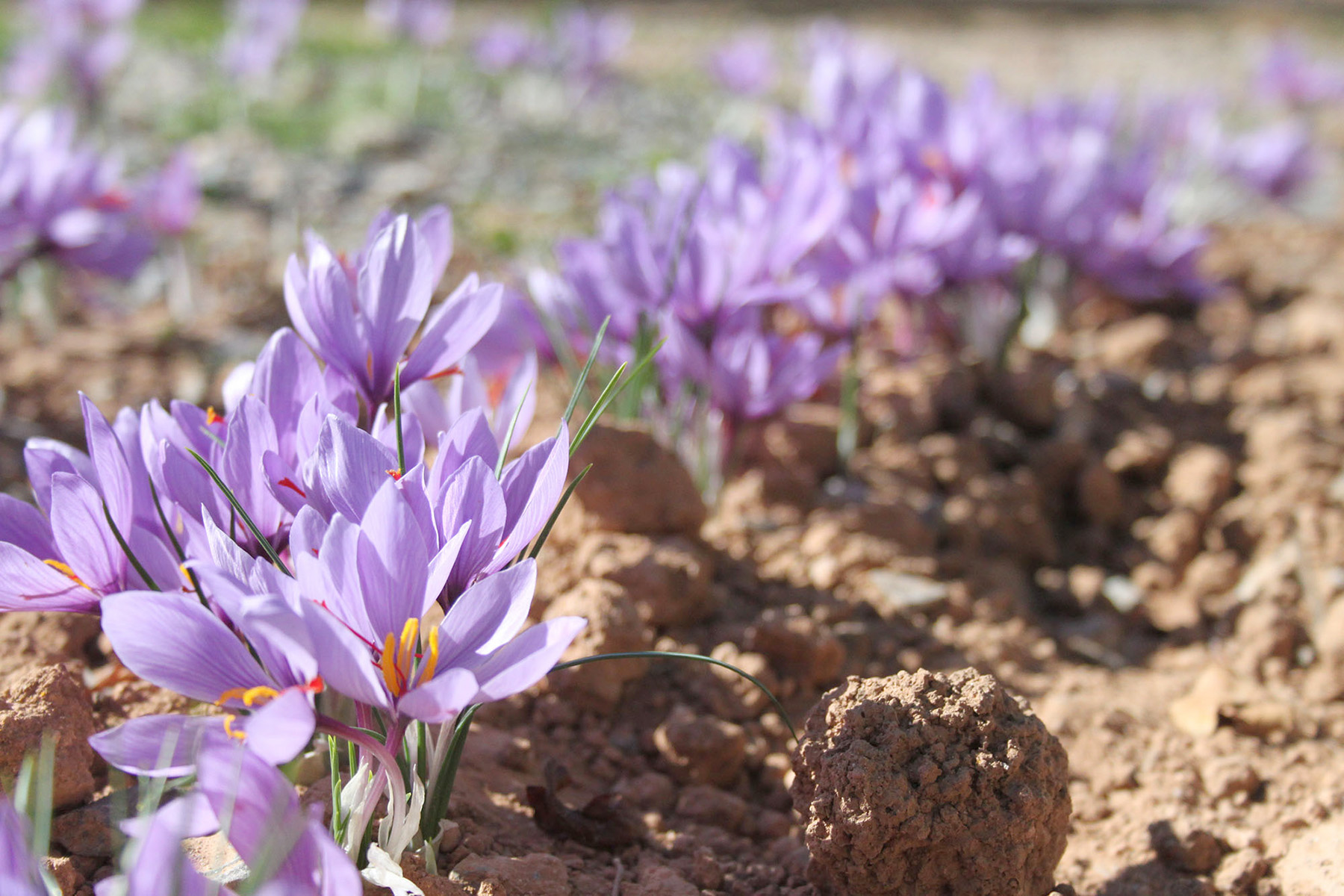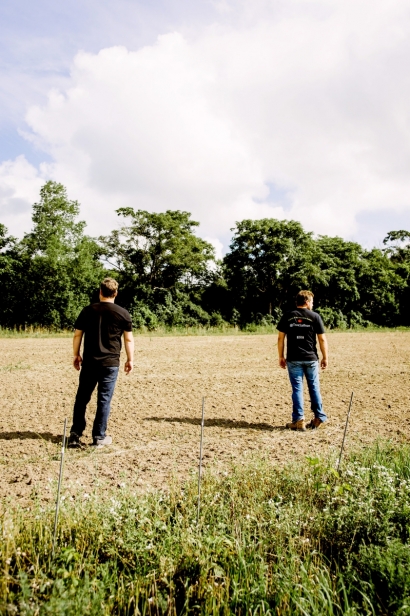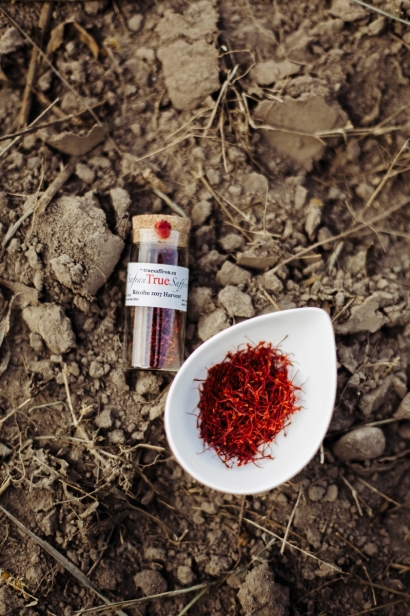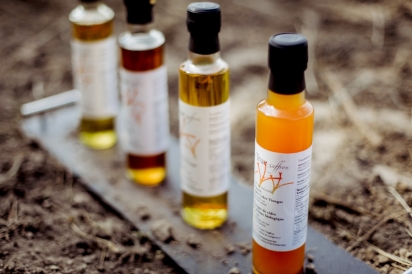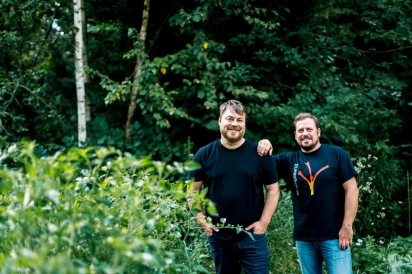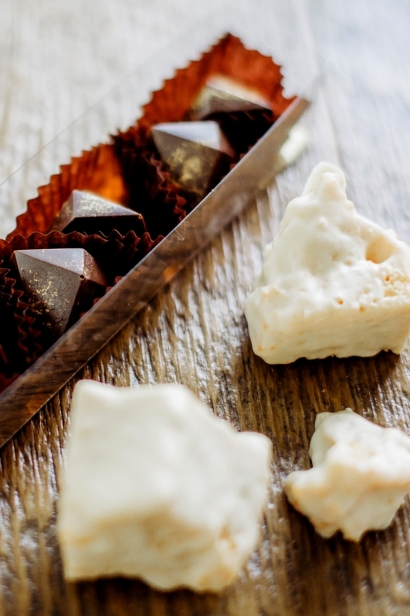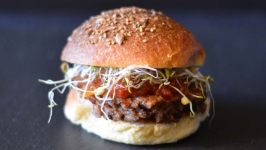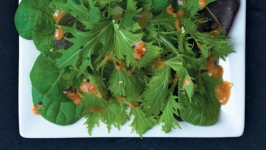There's Gold in Them Thar Hills
As Eric Charbonneau and Martin Albert watch neighbouring fields fill with vegetation through the prime summer growing season, they stare out at their own empty field, containing only pebbles and weeds. Albert and Charbonneau own and operate True Saffron — where harvesting time begins when, for most crops, it has ended. When the weather cools, when the first touch of frost brushes the air and as the days grow compressed, this is the time when they head outdoors to a once dormant field transformed into an acre of blooming saffron.
Come early fall, as if by magic, the barren field turns into a sea of delicate mauve flowers. The purple mass hugging its surface turns from intrigue to recognition as close inspection reveals flowering saffron crocuses. It is an odd sight in October and an unexpected one, especially when most flora has already been grazed by frost as nature prepares for winter. “It’s weirdly beautiful because at that time of year, there are no other blooming flowers, so the saffron field is alive with bees and monarch butterflies. It’s a huge feast for them as they travel by or settle in for winter,” Albert says.
Considered a very valuable commodity through the ages, spices were traded as treasures by ancient civilizations, some of them were valued more than gold. Today, saffron holds the title as the most expensive spice by weight on the planet. Often referred to as “red gold,” because it's the rarest spice in the world, saffron is also one of the most counterfeited of all foods, with 75 per cent of the world’s supply purported to be fake.
As spice ambassadors and educators, Albert and Charbonneau say one of the things people need to understand is the ethical provenance of food. Saffron can come from other countries and be a fraction of the cost, but often its authenticity is unknown. There are many imposters with some substituting safflower, which boasts some of saffron’s colour, but none of the flavour.
While crocus is traditionally known as an early spring-flowering bulb, saffron bulbs are autumn bloomers, flowering just as October sets in. Crocus Sativus Linnaeus or “saffron crocus” looks like a regular crocus, but is quite different; its leaves are longer and thinner, growing up to 30 centimetres or more, and plants can produce between 20 and 60 leaves through the growing season. Three red stigmas or threads located within the flower further mark it out from regular spring crocuses.
Their cultivation of this saffron field near Warkworth, Ont., makes Albert and Charbonneau the only commercial growers of saffron in Ontario and possibly only one of two in Canada.
Their idea to grow saffron wasn’t years in the making. The project began on a whim when a friend suggested they try growing it.
“That was spring 2016 and within two weeks, I somehow managed to order 50,000 saffron bulbs without proper land on which to plant,” Albert says. With the help of an army of volunteers, the planting, which started late due to shipping problems, took place over 23 days — and one month later, they had their first harvest. “And we did it in the worst drought in 95 years in Northumberland County,” Albert says.
Albert describes the saffron bulbs as powerful little creatures. They plant them 30 centimetres deep, so it’s a long journey to bring a flower. “Some plants were already making four, five, six flowers last year, so if the bulbs get bigger and bigger before multiplying, they can each make up to six to eight flowers per plant.”
Though associated with warmer countries, saffron easily survives Ontario’s harsh winter climate without any winter protection due to True Saffron’s planting depth. With more shallow planting, they would die over the winter. The plants will bloom in the rain or in the snow, and they seem untroubled even by incursions of rabbits or deer.
The plants bloom for about four weeks each year from mid-October to mid-November. Harvesting begins as the flowers appear. It is labour intensive — which accounts for saffron’s high market value. Each flower has to be carefully picked, peeled and processed by hand. They harvest the flowers daily; and remove the pistils (composed of three stigmas) before trimming, weighing and drying them in small batches. The pistils must then rest (or cure) in complete darkness for a month, to allow full development of the aroma, colour and flavour.
In the first year of harvest, they processed 6,500 flowers. By the next year, that number had reached 78,000. This year. they expect to harvest between 150,000 and 250,000 flowers — all from the initial 50,000 bulbs.
Every year, each bulb becomes three to five bulbs and as they start to grow and split again, Albert expects there will be at least 250,000 bulbs this fall. Eventually, they will have to be dug up, split and replanted to sustain a healthy crop and avoid overcrowding and disease. “It’s a crazy journey, but we jumped in with both feet and we can’t look back.”
If their harvest yields 150,000 flowers this year, that would produce a kilogram of saffron, with a market value of roughly $60,000.
After each harvest, True Saffron sends its product to a laboratory in Quebec for International Organization for Standardization testing and grading. The results to date have been exceptional — exceeding Grade 1 level, suggesting their product ranks among the world’s best.
Saffron bulbs are genetically identical so the final quality reflects competent processing or a lack thereof. Dry them at too high or too low a temperature and the quality can suffer.
While saffron is an expensive spice, you only need a little for the wizardry to work. Consider that a half-gram flask retails for $30 at True Saffron and contains enough saffron for 19 to 25 dishes for four people, which equates to about $1.20 to $1.60 per four servings, making this luxury spice quite affordable. And its shelf life of three to four years is not compromised if it’s kept in an airtight container in a dark place.
“We are always learning about saffron,” Albert says. “We are learning to cook with it — not only learning from the other countries that have grown it and used it for thousands of years, but using it in Canadian food from simple mashed potatoes that are saffron-infused to infusing pizza dough.” He adds that saffron-infused cream makes a great complement to breakfast oats, and even maple syrup can be infused to wonderful effect.
Fans of True Saffron will be pleased to know a cookbook is in the works, as well as a new line of True Saffron-infused products, including syrups, meringues, vinegars, jellies, a hot sauce and even a mustard.
When cooking with saffron, the process must be slow for best results. Infuse it or soak it in liquid (water, wine, broth, etc.) and leave it for at least 24 hours for great results, but a few days and it's even better. Take care not to overcook the saffron; more than 20 minutes on heat will damage its antioxidant properties.
While True Saffron does not make health claims about its product, saffron’s health benefits have been documented and recognized by many cultures for thousands of years. Antioxidant benefits translate into lower blood pressure and cholesterol levels, better immune function, improved eye, brain and heart health — and perhaps even some greater resolve in the bedroom. Saffron is packed with minerals and vitamins, and it contains high levels of potassium, magnesium and iron.
The Trent Hills Chamber of Commerce recently named True Saffron Producers Inc. the 2018 Business of the Year.
Saffron, and saffron bulbs for planting, are available at True Saffron’s online store and can be shipped across Canada.
True Saffron Producers Inc.
truesaffron.ca | 416.882.7154 | @truesaffron


